Equipment
Mole Manor is used primarily for astrophotography, but it can be outfitted for visual observation. Most of the photos below show equipment that was updated later to a more modern version. In particular, older CCD cameras have been replaced with modern CMOS cameras.
~~~~~~~~~~ Astrophotography ~~~~~~~~~~
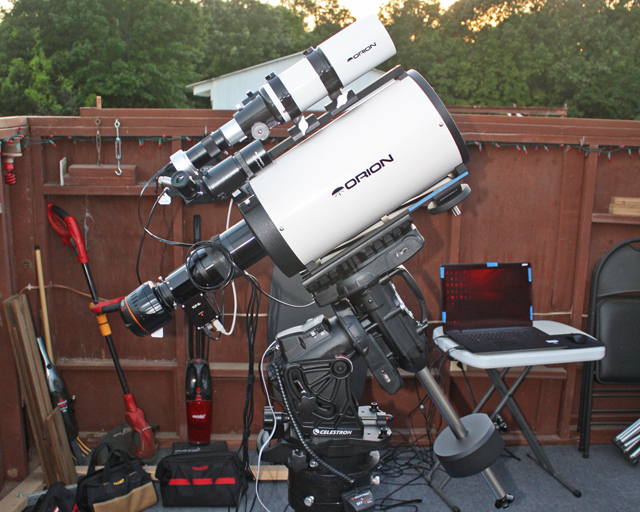
An Orion 8 inch f/8.0 Ritchey-Chrétien astrograph can be set up for deep space astrophotography. Shown attached to the back of the Ritchey-Chrétien is an Optec TCF-Si focuser and an older Celestron Nightscape 8300 color CCD camera. The guiding set-up is an Orion StarShoot AutoGuide camera attached to an Orion 80 mm f/5.0 Short Tube refractor. This photo shows the 8" R-C on a Celestron CGX-L mount.
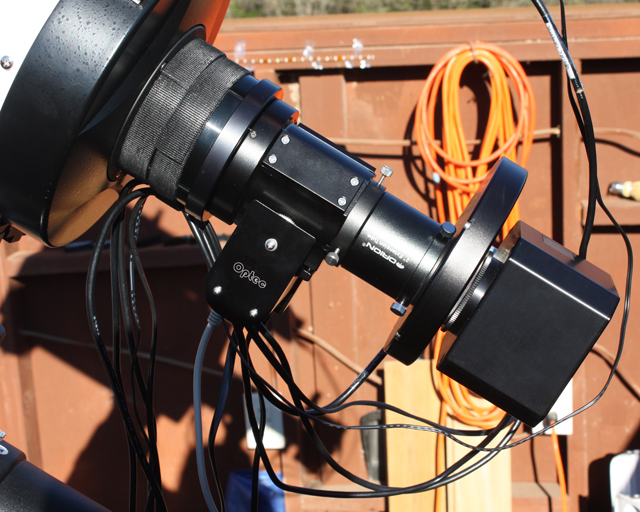
In this case, the camera on the Ritchey-Chrétien is an older Orion Parsec 8300M monochrome CCD camera. An Orion Nautilus filter wheel with luminance, red, green, and blue filters is used to make the exposures necessary to assemble a color image.
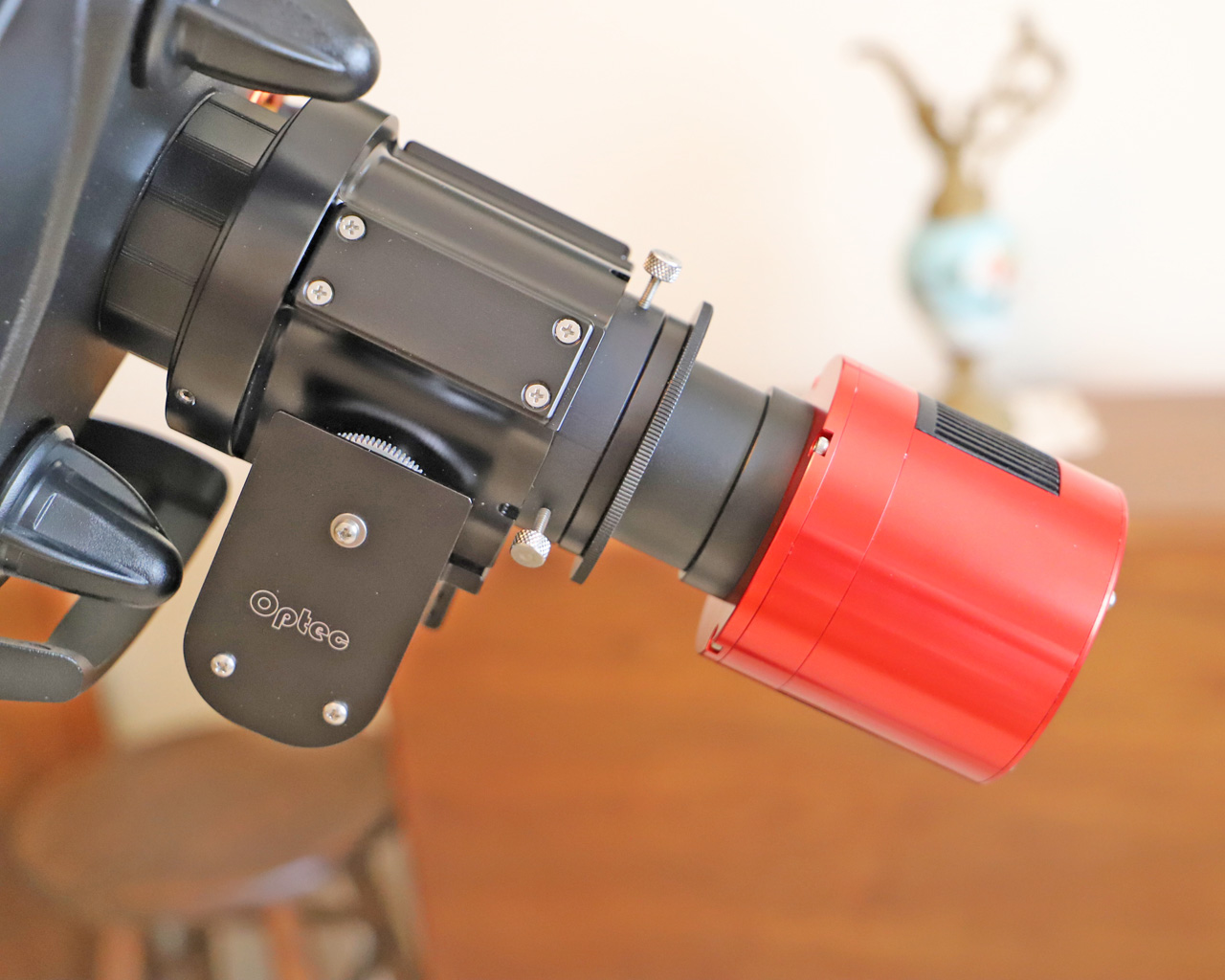
Modern CMOS (complimentary metal oxide semiconductor) cameras have largely replaced the older technology CCD (charge coupled device) cameras for astrophotography. Here a ZWO ASI 1600MC color CMOS camera is attached to the focuser on the back of a Celestron 8" Edge HD Schmidt-Cassegrain optical tube.

For wide field deep space astrophotography, a William Optics 71 mm f/4.9 STAR71 refractor can be set up with a CCD or CMOS camera and a guide scope. This photo shows the William Optics 71 mm refractor and an older QSI 683cs color CCD camera. The guide set-up is a StarShoot AutoGuide camera on an Orion 50 mm f/3.2 Mini Guide Scope. A wooden fixture was fabricated so that the light wide field set-up could be balanced on a mount designed for heavier equipment.
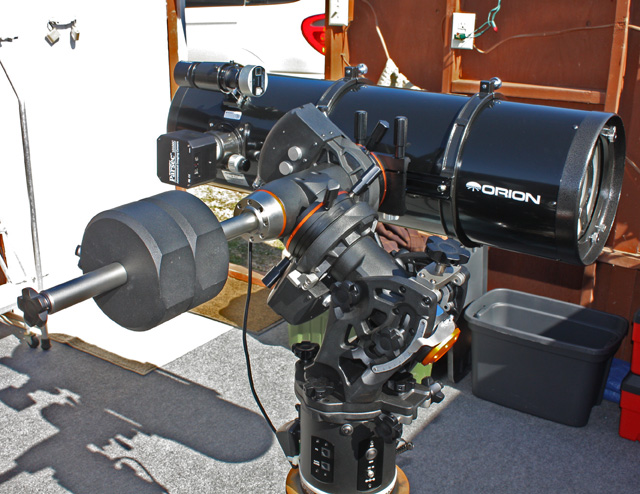
An intermediate field of view and more light gathering capability are provided by an Orion 10 inch f/3.9 Newtonian Astrograph. This photo shows the Newtonian being set up with a Baader Planetarium coma corrector and an older Orion Parsec 10100C color CCD camera. The guide set-up is the StarShoot AutoGuide camera on the Orion Mini Guide Scope.
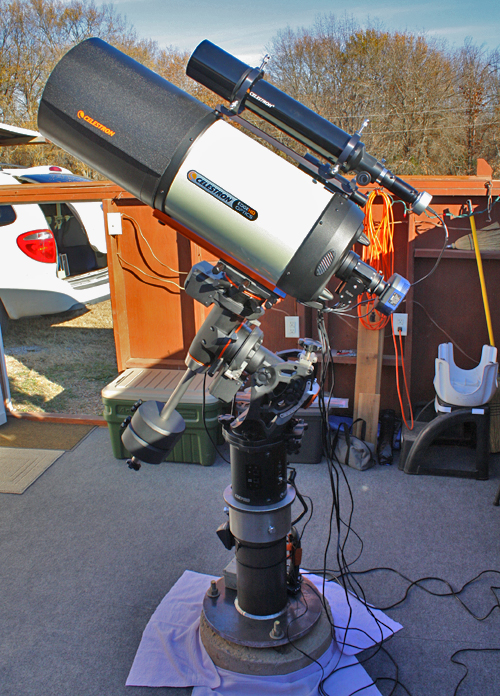
A narrow field of view for astrophotography is provided by a Celestron 11 inch f/10.0 Edge HD Schmidt-Cassegrain telescope/astrograph. The Schmidt-Cassegrain is shown here with the Optec TCF-Si focuser and an older QSI 683cs color CCD camera. The guiding set-up is an Orion StarShoot AutoGuide camera on a Celestron 80 mm f/7.5 refractor. This photo shows the Schmidt-Cassegrain mounted on a Celestron CGE Pro mount on the Mole Manor Observatory pier.
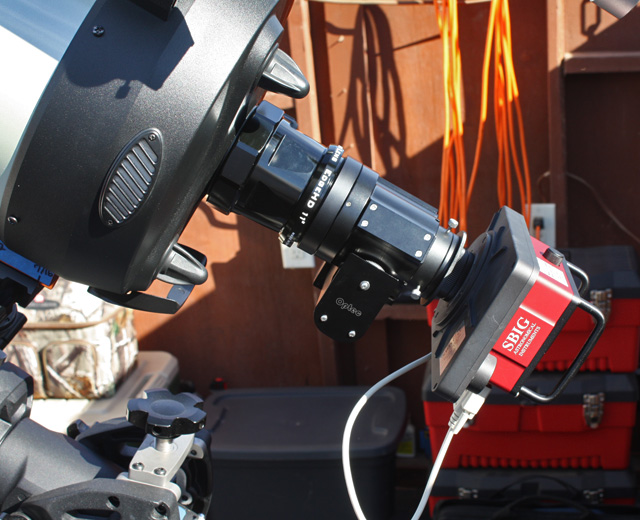
A focal reducer can be used to change the Celestron 11 inch Edge HD Schmidt-Cassegrain telescope/astrograph from f/10.0 to f/7.0. This shortens the focal length and widens the field of view. This photo shows the Schmidt-Cassegrain with the 0.7x focal reducer, the Optec TCF-Si focuser, and an older SBIG STF-8300M monochrome CCD camera and filter wheel.
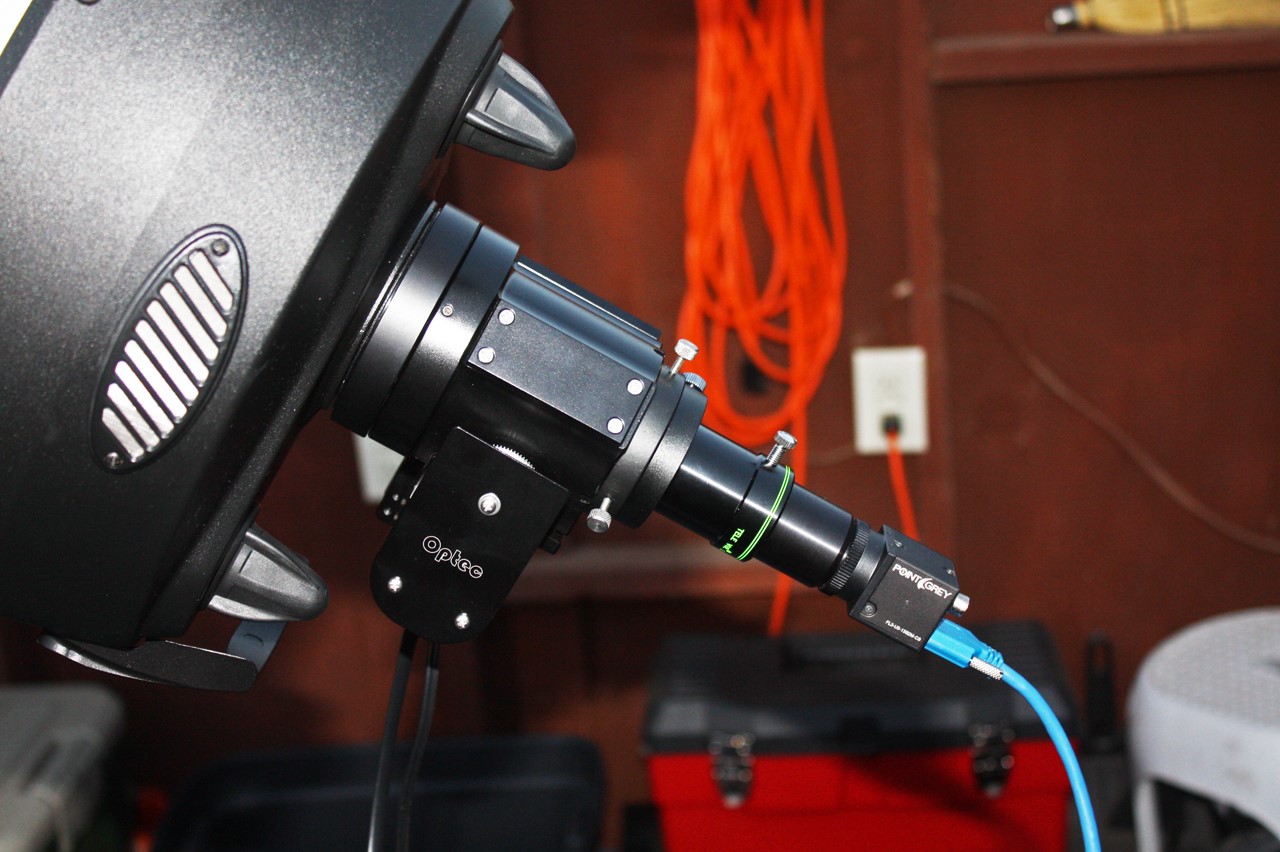
The Celestron 11 inch f/10 Edge HD Schmidt-Cassegrain can be configured with a video camera for planetary astrophotography. This photo shows the 11 inch Schmidt-Cassegrain with a Point Grey Flea 3 CMOS video camera. A 2.5x PowerMate has been added to provide additional magnification. The video frames from the video camera are recorded on a laptop PC and processed later to produce a single image. No guide scope is needed for planetary astrophotography.
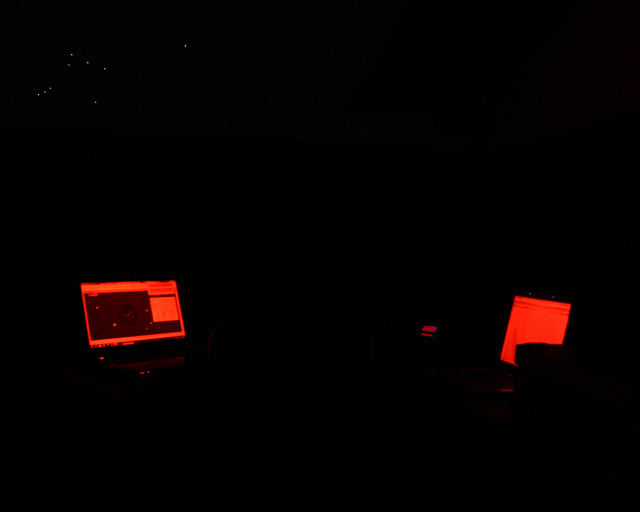
A laptop PC running MaxIm DL is used to control and monitor the telescope, main camera, and guide camera and to download the astrophotos from the main camera. A second laptop PC runs the Starry Night planetarium program in real time and contains planning files and photos. A red filter is placed over each PC screen during nightime operation.
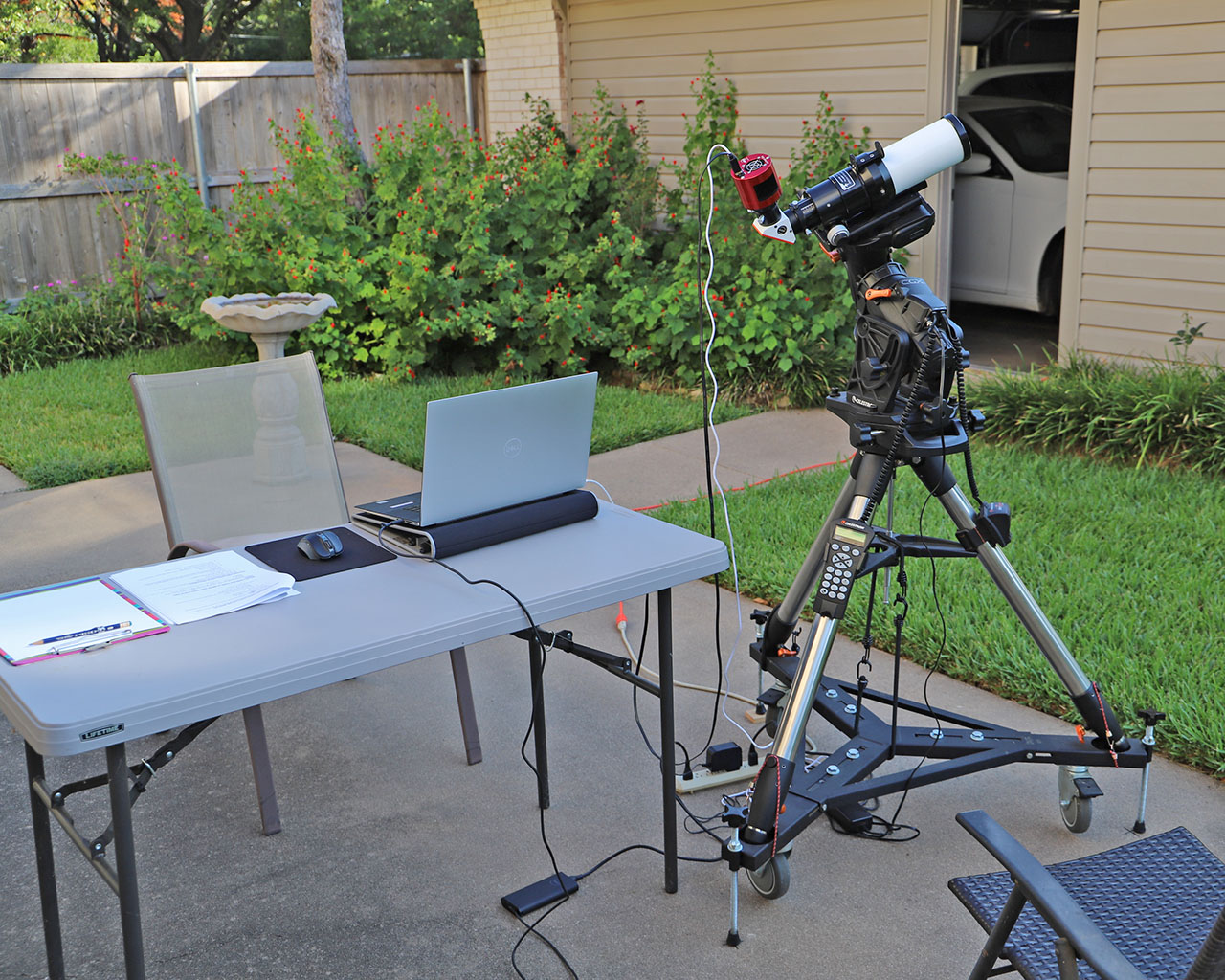
Hydrogen alpha photos of the sun can be made with the set-up shown here. A 60 mm Lunt LS60THa solar telescope and a ZWO ASI 174MC color CMOS camera are shown mounted on a Celestron CGX mount. And the mount is mounted on wheely bars.
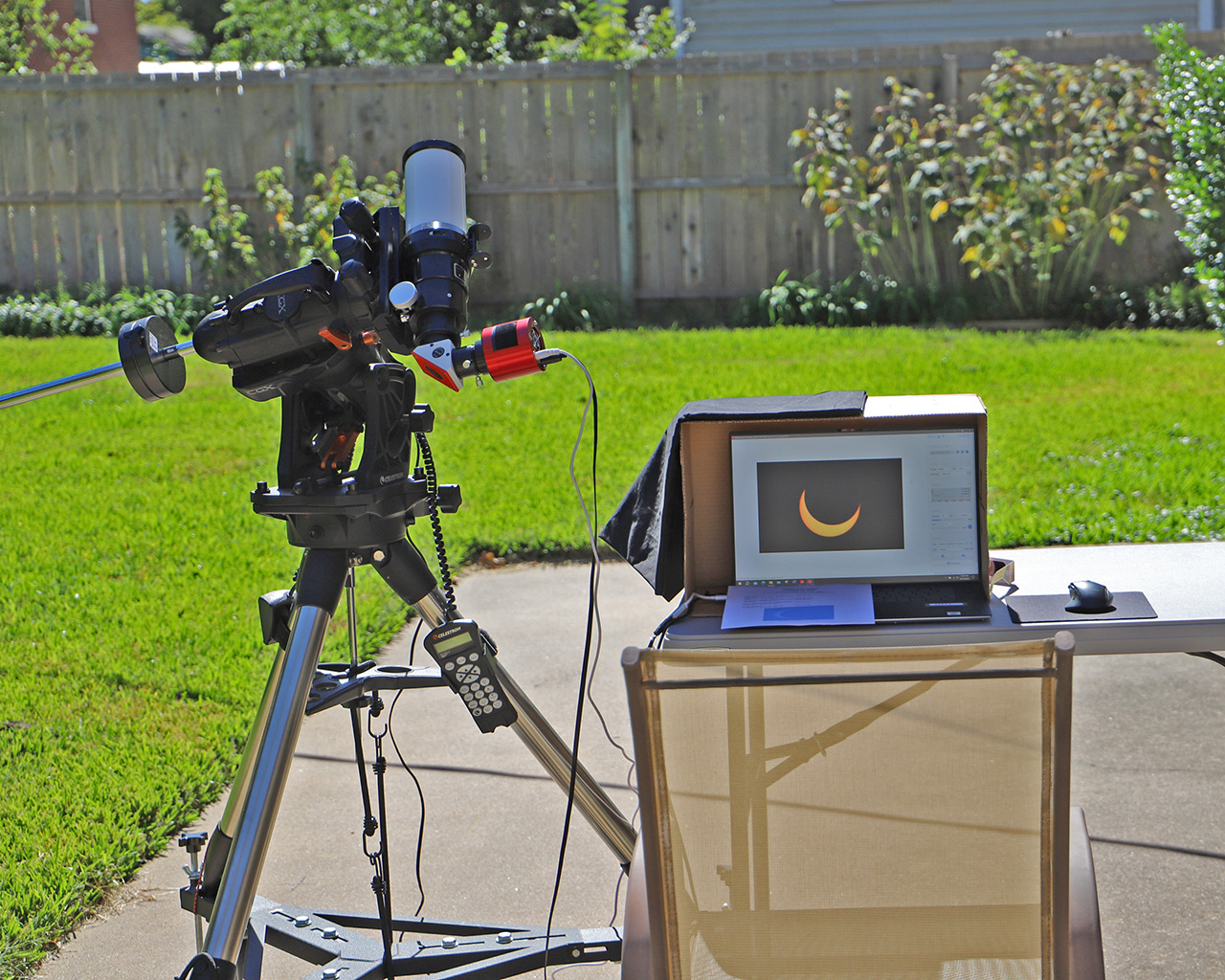
The hydrogen alpha set-up is shown photographing a solar eclipse.
~~~~~~~~~~ Visual Observation ~~~~~~~~~~
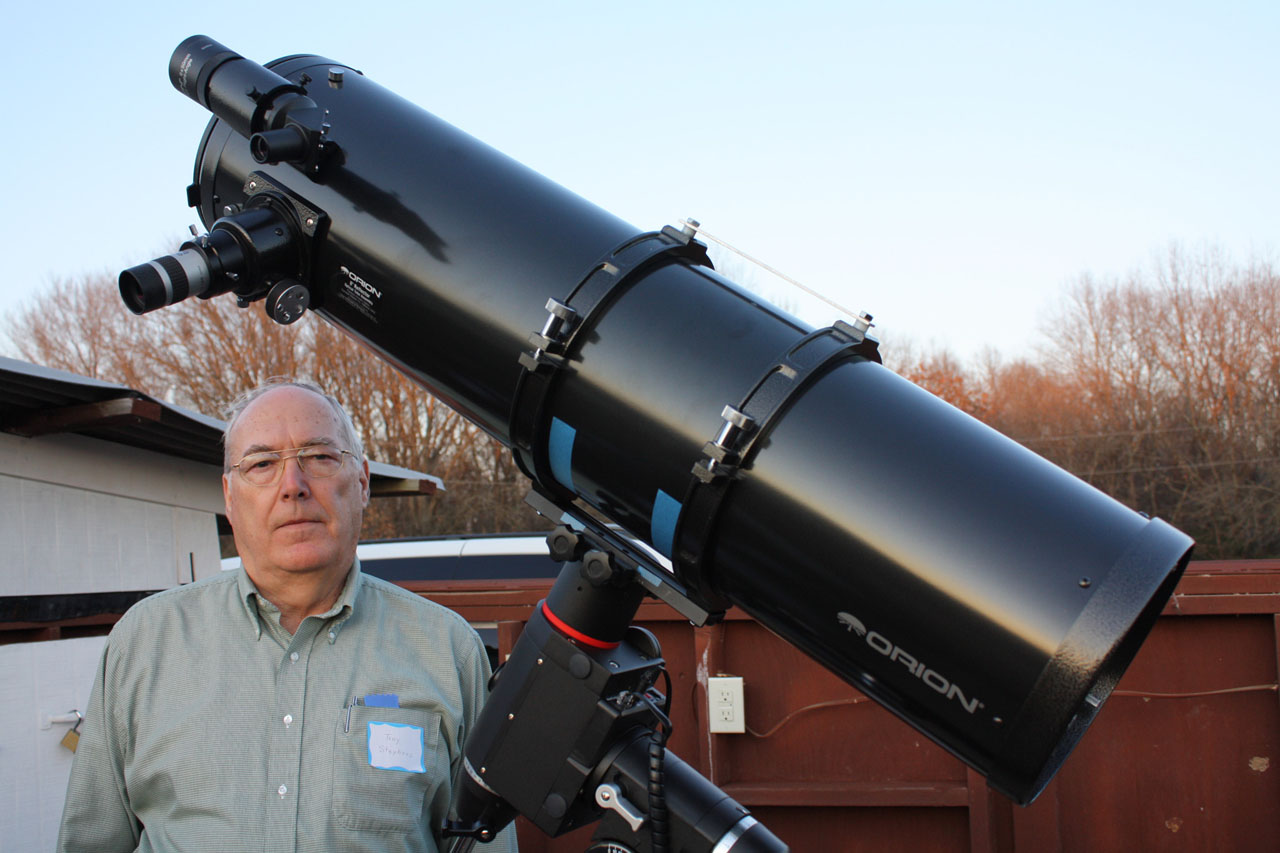
The Orion 10 inch f/3.9 telescope/astrograph can be used for visual observation. This photo shows the 8 inch Orion f/4.0 Newtonian that was the first telescope used in the observatory.
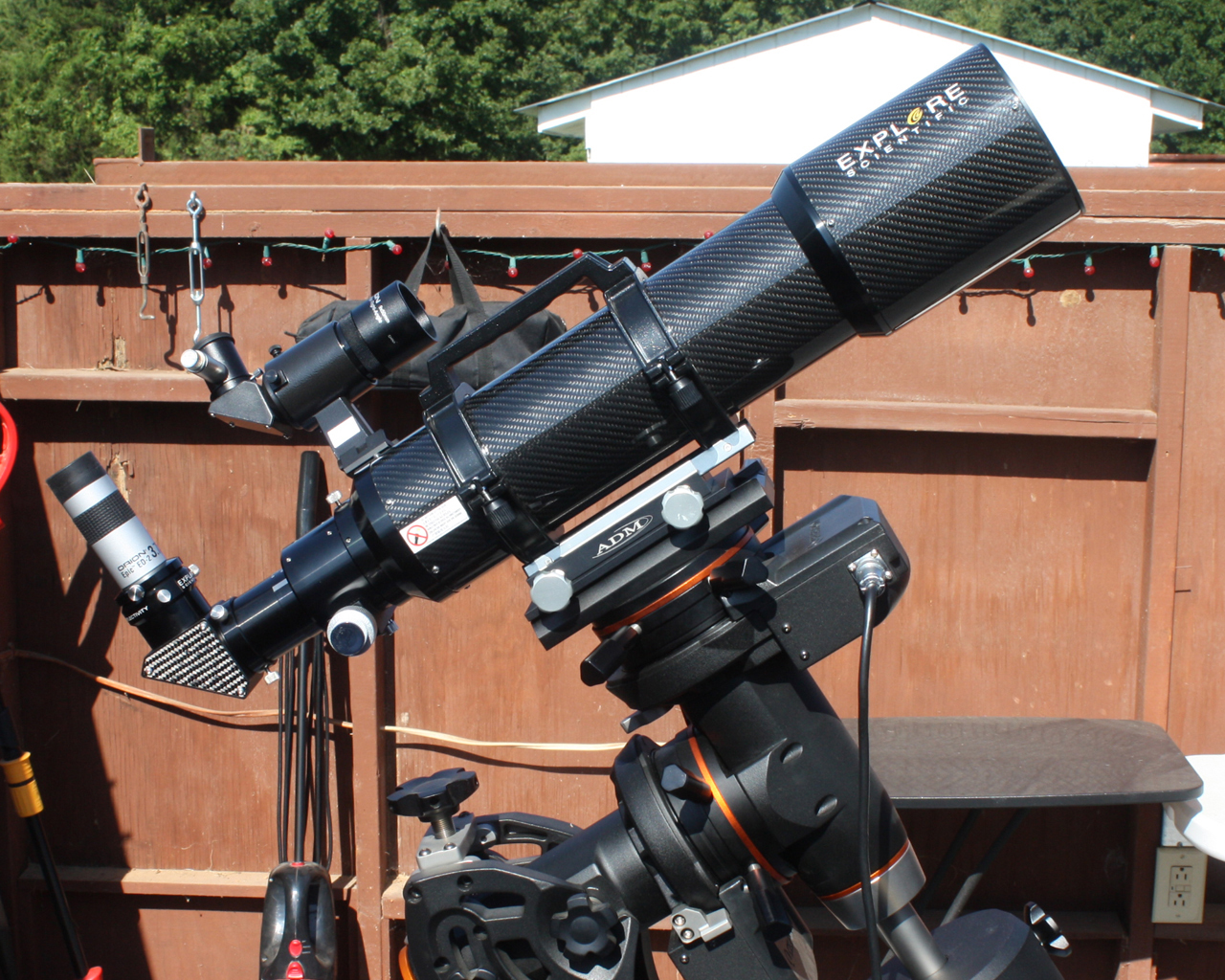
The Explore Scientific 102 mm f/7.0 refractor can be used for wide field visual observation. Wider fields of view are provided by a TPO 6 inch f/4.0 Newtonian and the Wiliam Optics 71 mm f/4.9 refractor.
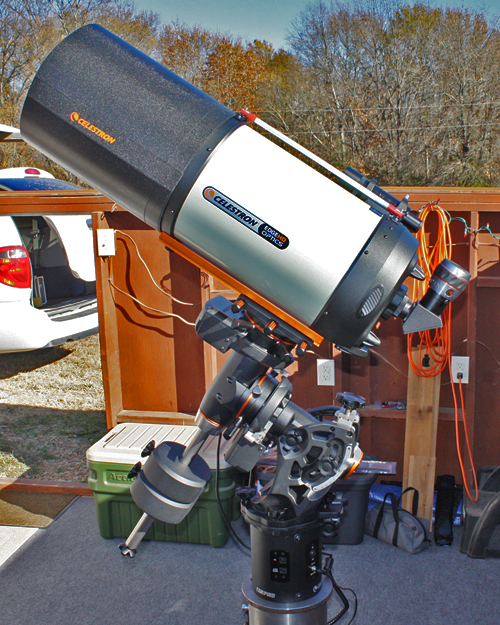
The Celestron 11 inch f/10.0 Edge HD Schmidt-Cassegrain telescope/astrograph gives high visual magnification with a relatively narrow field of view.